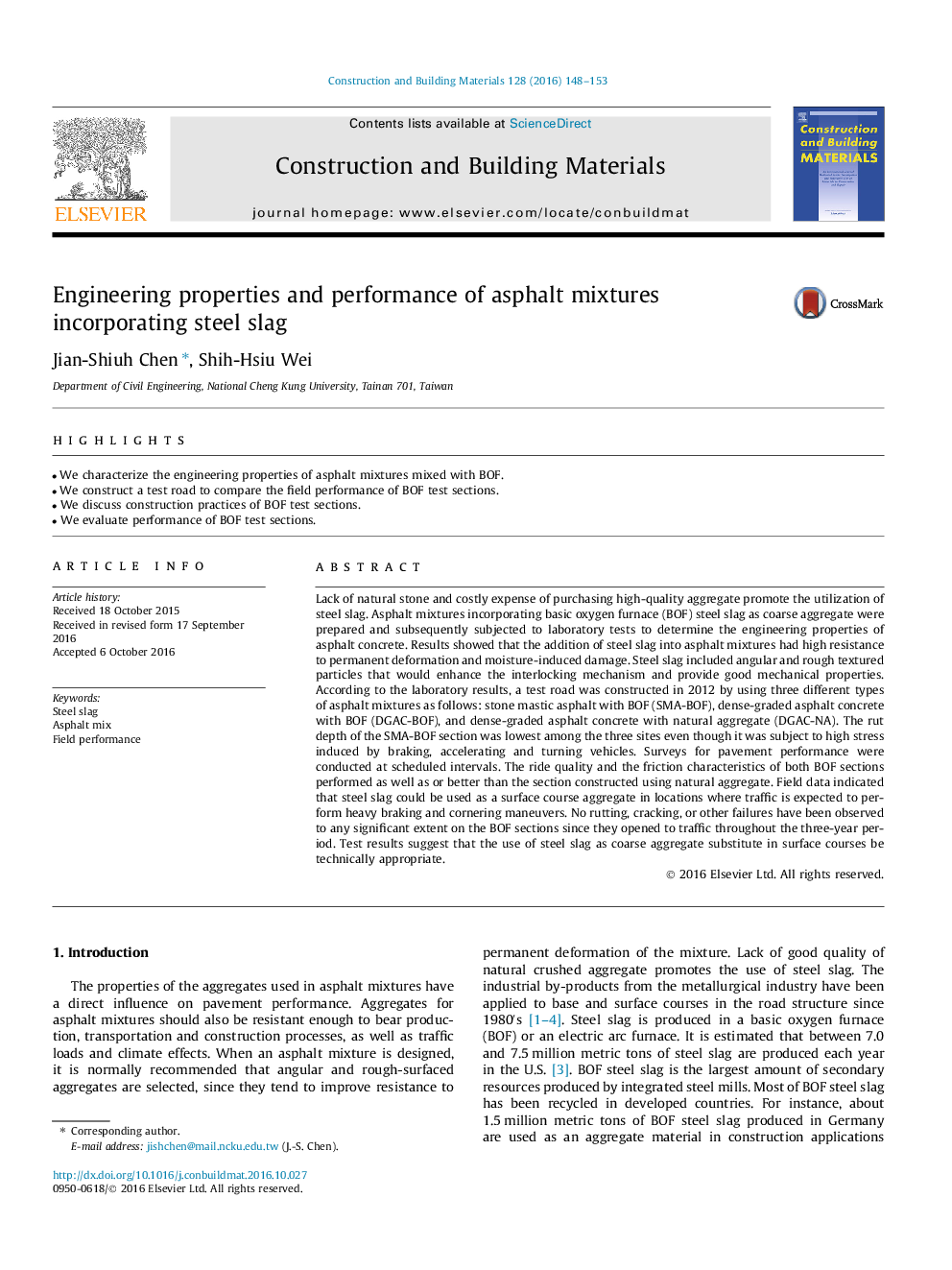| Article ID | Journal | Published Year | Pages | File Type |
|---|---|---|---|---|
| 4914030 | Construction and Building Materials | 2016 | 6 Pages |
Abstract
Lack of natural stone and costly expense of purchasing high-quality aggregate promote the utilization of steel slag. Asphalt mixtures incorporating basic oxygen furnace (BOF) steel slag as coarse aggregate were prepared and subsequently subjected to laboratory tests to determine the engineering properties of asphalt concrete. Results showed that the addition of steel slag into asphalt mixtures had high resistance to permanent deformation and moisture-induced damage. Steel slag included angular and rough textured particles that would enhance the interlocking mechanism and provide good mechanical properties. According to the laboratory results, a test road was constructed in 2012 by using three different types of asphalt mixtures as follows: stone mastic asphalt with BOF (SMA-BOF), dense-graded asphalt concrete with BOF (DGAC-BOF), and dense-graded asphalt concrete with natural aggregate (DGAC-NA). The rut depth of the SMA-BOF section was lowest among the three sites even though it was subject to high stress induced by braking, accelerating and turning vehicles. Surveys for pavement performance were conducted at scheduled intervals. The ride quality and the friction characteristics of both BOF sections performed as well as or better than the section constructed using natural aggregate. Field data indicated that steel slag could be used as a surface course aggregate in locations where traffic is expected to perform heavy braking and cornering maneuvers. No rutting, cracking, or other failures have been observed to any significant extent on the BOF sections since they opened to traffic throughout the three-year period. Test results suggest that the use of steel slag as coarse aggregate substitute in surface courses be technically appropriate.
Related Topics
Physical Sciences and Engineering
Engineering
Civil and Structural Engineering
Authors
Jian-Shiuh Chen, Shih-Hsiu Wei,
